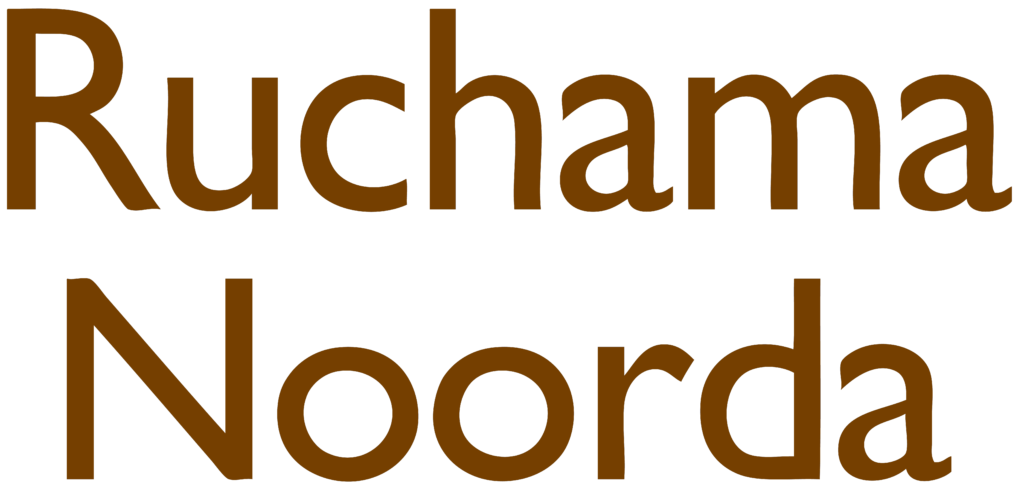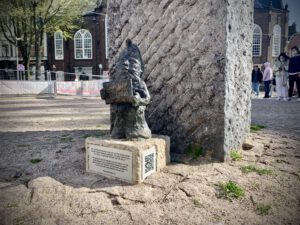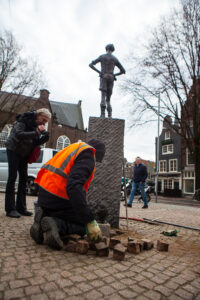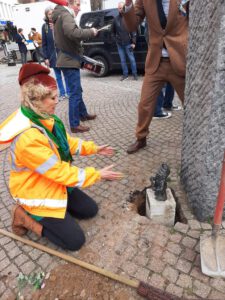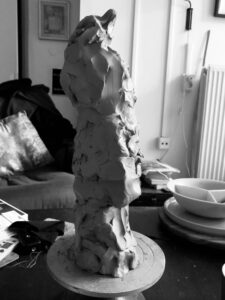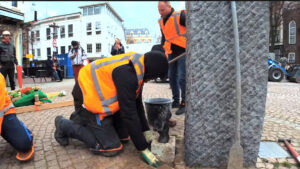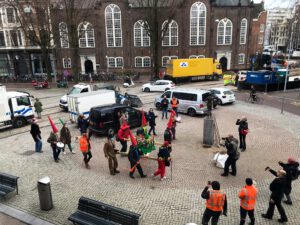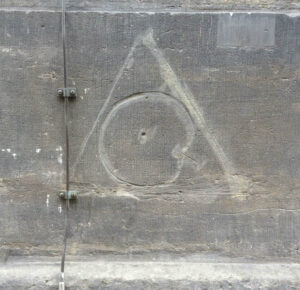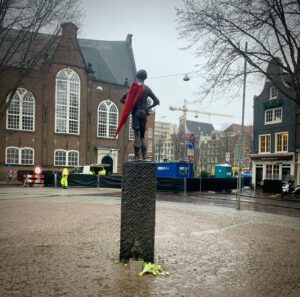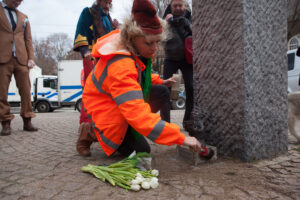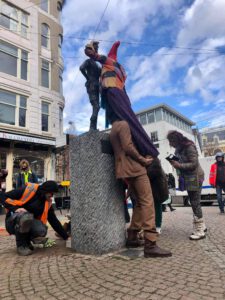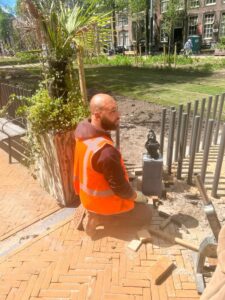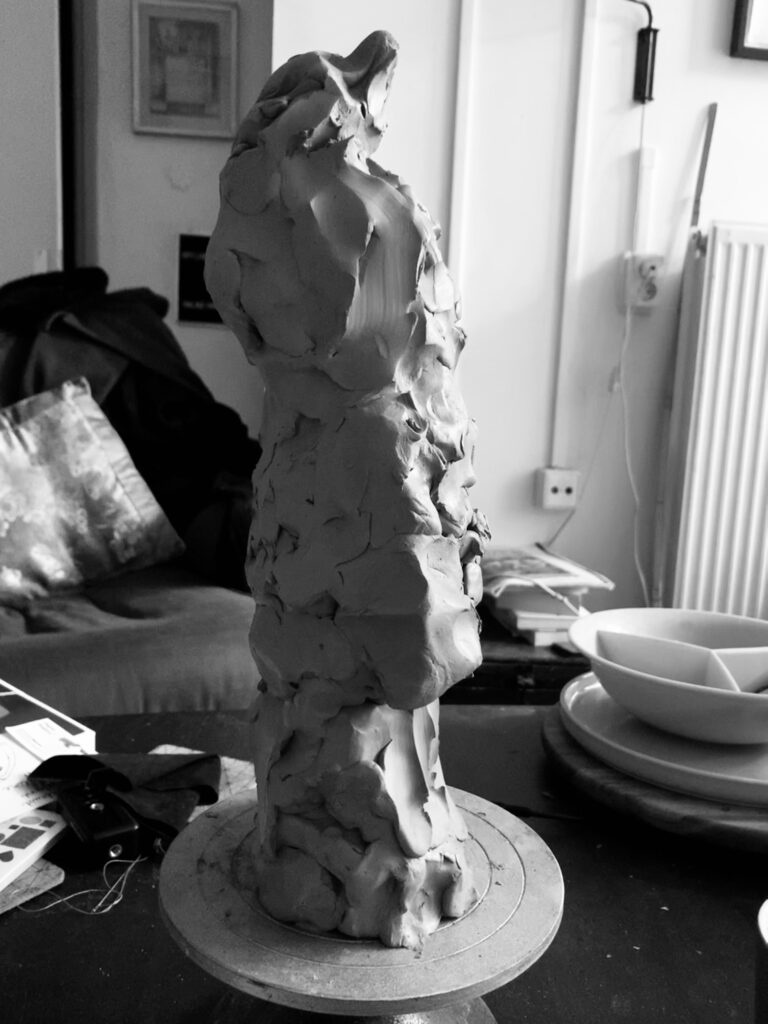
KABOUTER @MAGIESSENTRUMAMSTERDAM
Kabouter is the Dutch word for gnome or leprechaun. In folklore, the Dutch Kabouters are akin to the Irish Leprechaun, Scandinavian Tomte or Nisse, the English Hob, the Scottish Brownie and the German klabauter or kobold….. The Dutch and Belgian Kabouter protest movement and political party (1969-1974) grew out of the countercultural movement of the Provos and focused critical attention on issues of consumerism, housing and environmental degradation.
Wikipedia
I first became familiar with the Amsterdam Kabouters when I was invited to participate in the demonstration for the 50th anniversary of the Kabouter Movement on September 15, 2019, which took place on the Spui. The ideals of the Kabouters appealed to me because they correspond closely to the ideals of the late 19th century Lebensreform (Life Reform) movement that has always been close to my heart. The impact of Lebensreform is most obvious in the Netherlands today in the proliferation of health food shops, yoga studios and elementary school education but the movement’s legacy runs much deeper in the international growth of environmentalism and climate change activism, ecological thinking and innovative and creative resistance to the ideology of perpetual growth.
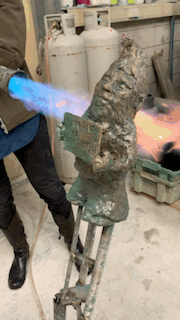
The Kabouters grew out of the damp grey, seashell-encrusted Amsterdam clay. The movement took shape under the sign of the Gnot– an image of an apple with a dot and stem – later set into the cobbles of the Spui in the shadow of the Lieverdje– the famous statue of a street urchin celebrating adolescent mischief. The Spui remains an active magic center for playful resistance to business-as-usual. It’s a nursery for tending old commitments, channeling new ideas and energies. Along with Rudolf Steiner, Pyotr Kropotkin (1842-1921), the bearded anarchist activist-thinker who supported small scale agriculture and argued for cooperation over competition as the dominant vector within human evolution is the link back to the past – he is the proto-Kabouter.
Many years have passed since the Gnomes first showed themselves in Amsterdam. Their prophetic warnings have stood the test of time. Today’s global agribusiness and fossil fuel industries are locked into a vicious cycle of overproduction, resource depletion and environmental devastation. Rather than simply denouncing disaster capitalism, the Kabouters helped pioneer direct action alternatives: getting involved in Amsterdam’s municipal government, squatting empty buildings to counter homelessness and rising rents, creating alternative distribution networks for pesticide-free produce, setting up Knetter shops providing cheap second-hand clothing, organic fruit and vegetables.
One day in the fall of 2020, in the middle of the first COVID-19 lockdown- Year One of Nature’s global blow-back- a friend connected to the first generation Kabouters phoned to ask if I’d be willing to make a work to celebrate the fiftieth anniversary of the founding of the movement to honor the work of the veteran Kabouters who, though no longer in the headlines, are still active underground. The next morning, I woke up in a kind of green haze … and in two hours I pulled
the gnome out of a greasy lump of Amstel river clay. First, a kind of inverted embryo emerged under my hands in the shape of the pointed cap, and not long after, ten bare toes got a foothold. Then, as the hours passed and the clay settled, the gnome shrank a few centimeters. Once dry, I decided to cast the gnome in bronze using the lost wax method…
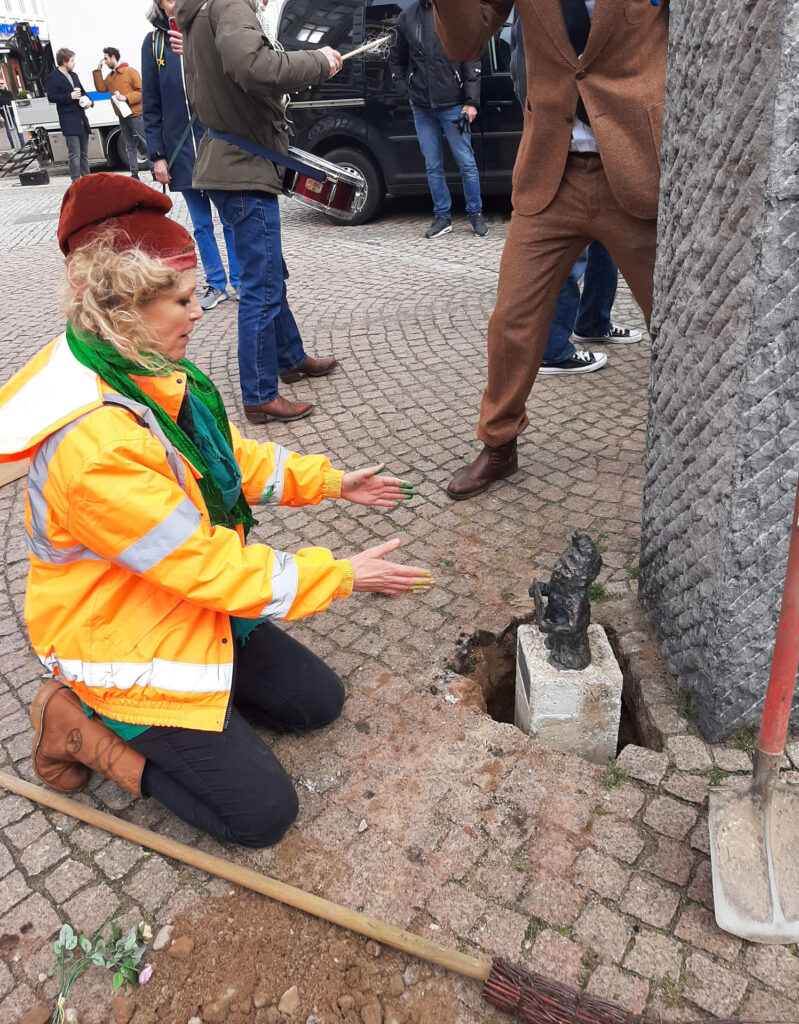
The Kabouter is for me the child before time – a short but powerful protector of what lies beneath the concrete, bricks and asphalt and the flat grid of fields we’ve taken from the sea. It’s a token of both the past and the future- a reminder of everything we’ve already lost, and, more importantly, everything we’re still responsible for.
Ruchama Noorda
KABOUTER @MAGIESSENTRUMAMSTERDAM, bronze statue, installed temporarily on het Spui in Amsterdam’s city centre on 11 March, 2021, and 16 June, 2022 was permanently installed in Amsterdam’s Postzegelpark, N.Z. Voorburgwal.
https://publiekewerken.ruchama.com/
